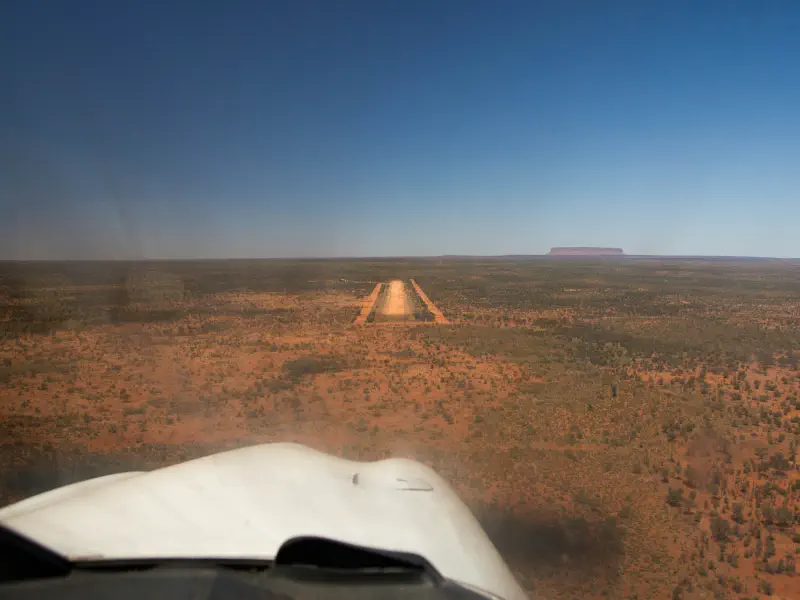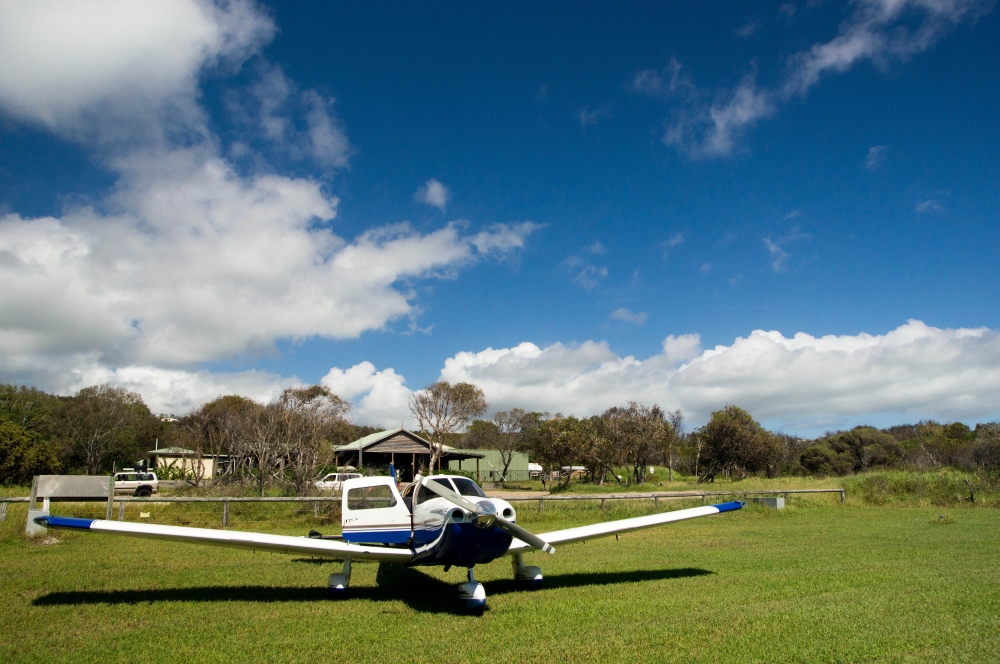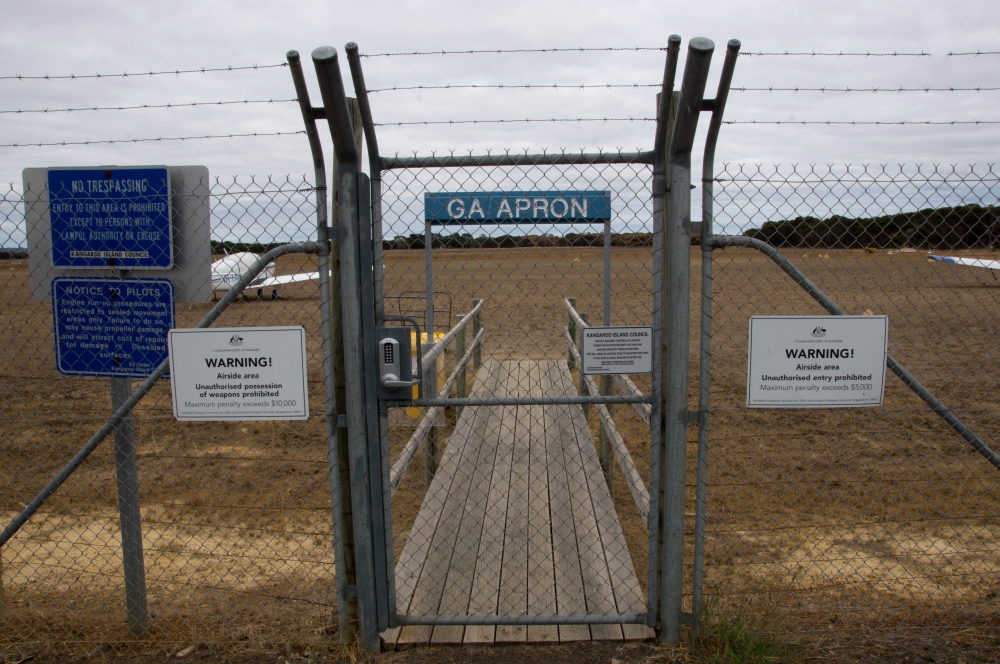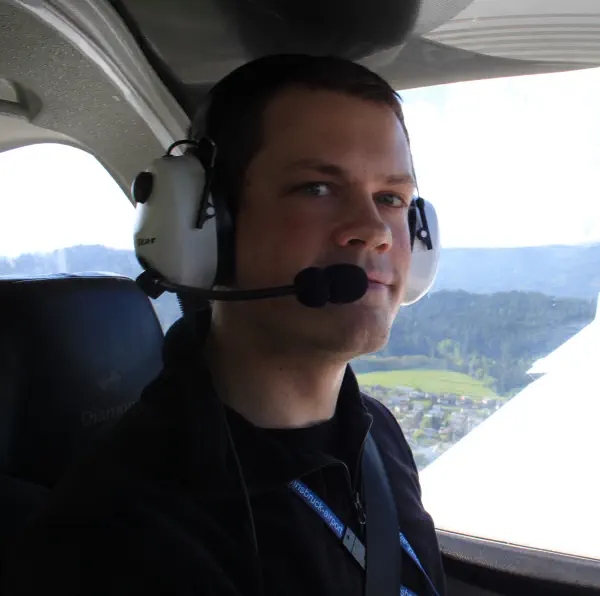
Check the Apps & Aviation section for pictures and videos of my flying down under!
NOTE: The information here is in no way official and subject to change. Check with CASA for actual conditions!
This website is for reference and information only and I do not assume any liability for its correctness and currency.
UPDATED AUGUST 2024
I Licence Recognition (EASA Licences)
For any flight crew license application, you first need an ARN (aviation reference number). If you don't have one yet, you also have to apply for one together with you CoV application. You only need to do that once. You will keep your ARN for life, so you will be able to use it for any further application.
You can also go for the full conversion of your licence to an Australian one. This can be done with any type of licence, but for everything other than a PPL, you will need to pass the relevant Australian exams. However it seems to have become easier to convert a private pilot licence. After going the CoV route four times, I am currently attempting the full conversion of my ATPL, but only for a PPL. This seems to require only paperwork and no exams, as long as you stick to private day VFR flying. Which is what I intend, so any further information here will be in regard to that. I will add my experiences here after I have (hopefully) completed the process.
You can find all information about PPL conversions here and in the civil aviation regulations.
- DOCUMENTS REQUIRED: To apply for a CoV or licence conversion, you need to provide several documents. They all have to be certified as true copies and be in English language. If you are not in Australia at the time of application, pretty much the only way to do this for a long time was to have them copied at the Australian embassy in your home country. They will then also certify it which might incur substantial costs for just a few sheets of paper. All documents not in english must be translated by a certified translator. However, this has become easier - now you can also visit a regular notary public to certify the documents (but it has to be in English of course) - another option is a designated Australian medical examiner which might be difficult to find outside Australia or somebody at your local aviation authority. This is what you need for a day VFR private CoV:
- European Pilot Licence
- Medical Certificate
- Last three months or last three page openings (whichever is lesser) of logbook
You can (and probably should) file your application online now via the CASA self service portal (link below). This makes the process much more convenient, as you can send the required forms and even all attachments (license, medical etc) online - it seems you can also simply send an e-mail, however. After registering, you can access all functions, which include filing applications and tracking their progress/status.
In August 2024, there was actually no explicit requirement from the authorities for a checkride before exercising the privileges of the CoV that I could find in the docs (except they say they can always impose that at their discretion), however I highly recommend checking with CASA about the current requirements before you go flying. That said, the owner/operator from which you hire the plane will require a checkride anyway.
- COSTS: As of August 2024, a CoV costs 150 AUD for private operations. However, the actual costs for all paperwork are significantly higher. You have to certify all copies and separately apply for a security clearance which also incurs a fee and requires a lot of certified documents (see below).
II Security Clearance (ASIC or AVID)
UPDATE November 2018: For flying in Australia with a CoV or any other licence, generally a security background check is required! You need to hold a so-called AVID (Aviation Identification) at the very least.
AND: to fly in and out a security controlled airport, you need to hold a so-called ASIC (aviation security identification card). This card signifies that you have undergone a security check. You do have two options for your flying in Australia now:
- Only use non-security-controlled airports (you still need an AVID)
- Obtain an ASIC
--- UPDATE August 2024 --- At the moment, to complete your ASIC application you have to be IN Australia to show the relevant documents in person! Also, CASA does not process ASIC applications anymore but has licenced issuing bodies for that now. I think you can apply from abroad but will eventuall be required to appear somewhere in person and the security clearance process will only start afterwards. So that makes it almost impossible to get one as a foreign pilot, unless you are able to spend some time in Australia. Contact with CASA revealed that they are aware of that problem for foreign pilots but I don't know if they are going to do something about it. So right now, from abroad, you can only apply for an AVID, again prohibiting you to fly into security controlled aiports! By the way, a security check is now a requirement for all pilots, so you will need one to have your CoV issued.
APPLY FOR AN AVID/ASIC: This is the official CASA page describing what documents you need to apply for an AVID/ASIC:
As right now there is no real way to obtain an ASIC as a foreign pilot, the following describes the process of getting an AVID. The good news here is that over the years this has in fact become easier. They changed the concept of identity proof a little bit so that now you need to combine some documents, each worth a specific number of points, to reach 100 points in total. You can find the options on the form. Here is my personal combination of documents for my application in 2024:
- PRIMARY ID: Certified copy of passport (70 points)
- SECONDARY ID 1: Certified copy of birth certificate extract in English (25 points)
- SECONDARY ID 2: Certified copy of credit card front and back sides (25 points)
III Flying Down Under
FLIGHT PLANNING AND NAVIGATION
There are a lot of different types of aviation charts in Australia. There are VFR charts and there area IFR charts, of course, but they have a lot of subtypes. One speciality is that a huge area (primarily in the less populated regions like the outback) is not covered by VFR charts that depict any airspace. There are navigation charts for these areas, but they do not show any controlled or special airspace like restricted areas, military training areas etc. Even though there are not much airspace restrictions to be found in the remote areas, some ARE there and are likely to be found where at least some ground facilities or settlements exist and so they might be on your route. Therefore, flight planning in areas where no dedicated VFR airspace charts exist can be troublesome, because you have to use IFR enroute charts to find out where approximately restricting airspace can be found and "overlay" that on your VFR chart. Or you can use electronic chart solutions, of course.
If your budget allows it, I would suggest to order the charts in advance and have them sent to your home to become acquainted with them and do as much of the planning you can before the trip. It reduces your time needed for flightplanning in Australia. The charts themselves are priced normally but the postage can be very high if you have them sent home from Australia. There might be other sources in Europe where you can get the Australian charts but I haven't found any. You can order the official and current charts online from Airservices Australia. This is what I did. As mentioned, the mail costs are high if you live far away from Down Under. Just make sure to check the issue dates and update cycle for all types of charts to avoid having to buy them again should some of them expire before your arrival in Australia. There is an amendment calendar on the Airservices Store website.
For easy flight preparation and navigation (licensed by CASA, so with all official information), check out OZ Runways.
Here is an overview of some of the available charts:
WAC - World Aeronautical Chart
A pure navigation chart at scale 1 : 1 000 000, using Lambert Conformal Conic Projection without any airspace depiction. It has to be used in the more remote areas where no airspace charts like VTC or VNC (see below) exist. To be aware of any airspace restrictions in the chart area, you have to use an IFR enroute chart (see below) in parallel.
© Copyright Airservices Australia. Used with permission. Click on the thumbnail to see full size image.
VNC - Visual Navigation Chart
A chart type that covers all busy areas, like the entire east coast. The scale is 1 : 500 000. Airspace is depicted, but can be hard to identify in regions with complex airspace structures, like terminal areas of large airports. For these areas, special charts with other scale exist - VTCs (see below).
© Copyright Airservices Australia. Used with permission. Click on the thumbnail to see full size image.
VTC - Visual Terminal Chart
A chart similar to the VNC but with a different scale (1 : 250 000). It is designed for navigation in busy terminal areas with often complex airspace structures. It only covers a smaller area but shows a lot of detail.
© Copyright Airservices Australia. Used with permission. Click on the thumbnail to see full size image.
IFR Enroute Charts
These are actually IFR charts, but can (and have to be) used in remote areas where no VNC/VTC coverage exists (WAC only) to identify any airspace.
© Copyright Airservices Australia. Used with permission. Click on the thumbnail to see full size image.
PCA - Planning Chart Australia
This chart serves as an overview of the entire continent. It shows the location of many airfields, flightwatch HF frequencies, ARIS (automatic enroute information service) frequencies, VHF and HF radio coverage and briefing regions. You can use this to know which codes to use when you get a weather and/or NOTAM area briefing.
© Copyright Airservices Australia. Used with permission. Click on the thumbnail to see full size image.
ERSA - Enroute Supplement Australia
This publication contains a lot of airfield information and charts, but is actually much more than that. You can find general information like about special use airspace, restricted areas, flightwatch frequencies, areas with special flight procedures, search and rescue signals and MUCH more. It is essential for flightplanning and reference. It does contain information and airfield charts of all registered and licensed airports but only of some unlicensed strips. These smaller private strips have no NOTAM service and information and permission to use has to be acquired through the owner/operator and/or by the use of other airstrip guides.
© Copyright Airservices Australia. Used with permission. Click on the thumbnails to see full size image.
For route planning in the more remote areas, the checking of fuel availablity is of utmost importance. It is strongly recommended to not only check this in the early planning stages, but also before departure of every leg in question. It is also a good idea to choose an alternate airport where fuel is available or to carry enough fuel to be able to return to the original destination after a diversion to the alternate. Especially in the outback you cannot have enough fuel reserves (except if limited by weight & balance). If you get stuck at a remote airstrip without fuel, you can have some sent to you by truck, but this will be extremely expensive. Not only in terms of transport, but you normally will have to buy whole 200 liter barrels. If you do not exactly need a multiple of 200 liters, you will pay a lot extra.
So always ring ahead before departure. Airstrips that normally have fuel can run out of it, or a bowser can get out of service. This happened to me once. However, I called ahead and found out that we will be able to jerrycan the fuel out of the underground tank. It took almost an hour to refuel, but at least it was possible. The following link has a map with some information about outback fuel. I have no information about the currency of that information, so just use it as a first overview and always check with the airstrip operator.
Outback Fuel
PREFLIGHT BRIEFING AND FLIGHTPLANS
For standard aviation weather briefings, filing flightplans ("flight notifications" or "SARTIME notifications") and retrieving NOTAMs you should use the official Airservices Australia briefing system NAIPS (National Aeronautical Information Processing System). There is a web-based interface (NIS - NAIPS internet service) which can be accessed with a webbrowser after registering once. There are a lot of text-based briefing options like METAR/TAF, SIGMET, NOTAM and area weather forecasts (that are sometimes a bit hard to really "translate" into a big weather picture if you do not know the area and the associated location indicators well) but not really a lot of graphical VFR weather charts. For a comprehensive weather briefing, you should really also check the general weather and the aviation weather service of the Bureau of Meteorology.NAIPS information page
Bureau of Meteorology (with link to aviation weather services)
You can also file flightplans ("flight notifications") via NAIPS. In the following, I will only discuss VFR flightplans. If your flight will enter controlled airspace, you should file a full flight notification (basically the ICAO flight plan form that European pilots are used to). If you stay entirely outside controlled airspace, there is no requirement to file a flightplan. If you wish to have a search and rescue service (SAR) nevertheless (which I would highly recommend!) you can file a SARTIME flight notification. It is much shorter than the full fligtplan form. You only have to enter some details about the aircraft and the intended route. Additionally (you can also do that on a full flight notification), you have to specify a so-called SARTIME. This is the time at which, if you have not cancelled your SARTIME before, search and rescue services will start investigating and if they are not able to reach you or get definite information about your status, will start a search. This is a bit different than the European system, where normally the start of search and rescue enquiries will be calculated from your ETD or ATD plus your indicated flighttime plus 30 minutes.
With a SARTIME, SAR action will always start at that time, regardless of your flighttime or departure time (even if you never departed). So you should file a SARTIME that is reasonably soon after your planned landing time (so that SAR action is not delayed) but also one that provides sufficient time to cancel it after landing. This is especially worth mentioning as (for example in the outback), you might land at an airstrip where there is no internet or mobile phone reception. It is very important to check before if there is at least a landline telephone to contact air traffic services. As a last resort, you can cancel via radio before landing, but at remote places at low altitude there may not even be VHF reception. And of course you do not have any protection anymore if something should go wrong on landing. You can cancel your SARTIME via NIS (online), on the phone (there is a dedicated number) or via radio.
As there is so much open space in Australia, especially in the deserts, I would really recommend to always file at least a SARTIME notification. If you don't, it might take hours or even days before someone notices you are missing and if there is no information about your route, a search could take a very long time. Also note that for flights through specified areas ("designated remote areas" - the outback, the western part of Tasmania or the Snowy Mountains region), survival equipment like water and rations has to be carried! A map of these areas can be found in the ERSA (see above).
UNCONTROLLED AIRPORTS
There are many airports in Australia and I think it is safe to say that the vast majority is uncontrolled. This does not necessarily mean that an uncontrolled airport is a "small" one, there can be regular passenger airline traffic in and out of it (Ayers Rock, for example). Some of these, like Ayers Rock, can be quite busy, others just have one airline flight a week. And of course there are many strips without any scheduled traffic, and even quite some that almost never see any traffic except local agricultural planes or similar. Airports with scheduled traffic (called RPT = regular public transport) are always security controlled so you need an ASIC (see above) to fly in and out of it. I have seen security controlled airports where nobody cares about your ASIC simply because no one is there and you are the first airplane in a week. Sometimes the code to enter the airport area again is written on the inside of the gates, so that you can enter on your own again. At security controlled airports with a bit more traffic, also the uncontrolled ones, this is often not the case and you need someone of airport operations to open the gate for you when you want to re-enter. This is the time when you certainly will be required to show your ASIC. See an image of an entry gate to a security-controlled airport below.There are still a lot of uncontrolled airports that are not security controlled, but only choosing them really restricts your options for route, and especially fuel planning. So I do strongly recommend to get an ASIC, maybe the information above in the section about security clearance can help you.

A pilot's dream: an uncontrolled, unlicensed and not security-controlled airstrip (Orchid Beach, Fraser Island)
You could get all airfield information like runway characteristics etc. from the operator and for some strips where no other "public" information exists, this might be necessary. For planning and airfield charts of unregistered/uncertified airfields, there fortunately is a publication which I can strongly recommend. It is called the "Country Airstrip Guide" and there is a printed and an electronic version. The latter is very handy as you can show all included airstrips on Google Earth, and you can open airfield information and charts while you plan your route. You can find further information at these websites:
Country Airstrip Guide / Country Airstrip Guide Online
Another nice publication for trip planning is the Pilots Touring Guide Australia.
Some unlicensed strips are also included in the ERSA (see above).

Entry gate to an uncontrolled, but security-controlled airport (Kingscote, Kangaroo Island)
CONTROLLED AIRPORTS
Since a few years, flying in and out of controlled airports in Australia has become a bit easier for pilots used to European procedures. The former so-called GAAP procedures (General Aviation Aerodrome Procedures), that presented a few peculiarities to the foreign pilot, have been replaced by "standard" class D procedures as used in a lot of European control zones. You can find helpful information about the procedures in general and also the special ones at selected airfields at these locations:CASA Class D Procedures
CASA Pilot Guides and Information
I have practical experience with these proecedures at a few airports (Alice Springs, Hobart, Launceston). Everything was pretty straightforward and very much like in Europe. There are certain recommended reporting and entry points to use. They are recommended as they are selected to be easily identifiable and provide an orderly entry to the circuit. You have to contact the tower frequency there and then (hopefully) will get a clearance to proceed into class D airspace along prescibed routes and/or direct to other reporting points, and finally instructions to join the traffic pattern.
Especially at larger complex airports with more traffic, be sure not to only prepare your approach but also your taxi on the ground. The general aviation apron might be at some "remote" part of the airfield and some parking space may be restricted. If I was unsure about where exactly to park (especially when parking for a longer time) I usually just stopped at a tie-down of the general aviation parking area and then asked someone on the ground (at the local aeroclub, for example) where it was possible to park the aircraft. You can also call ahead of course, which is highly recommended if there are parking restrictions mentioned in the charts or NOTAMs. The local aeroclub, if there is one, is always a good contact point to learn about local procedures.
This page may be extended with more information at a later time. If you have any questions, feel free to send me an email.
Oh, and by the way - flying in Australia is great so have fun!
